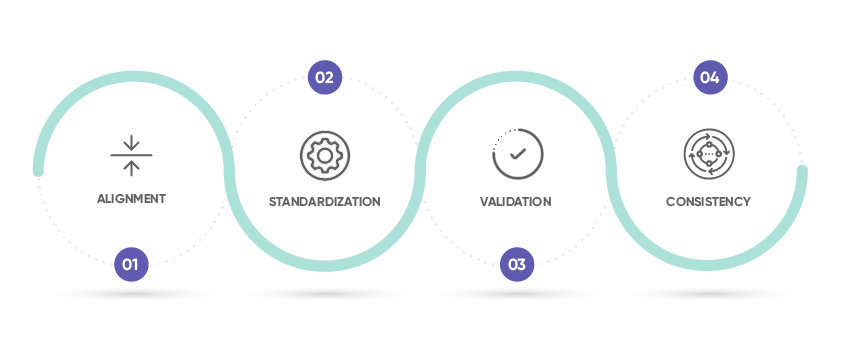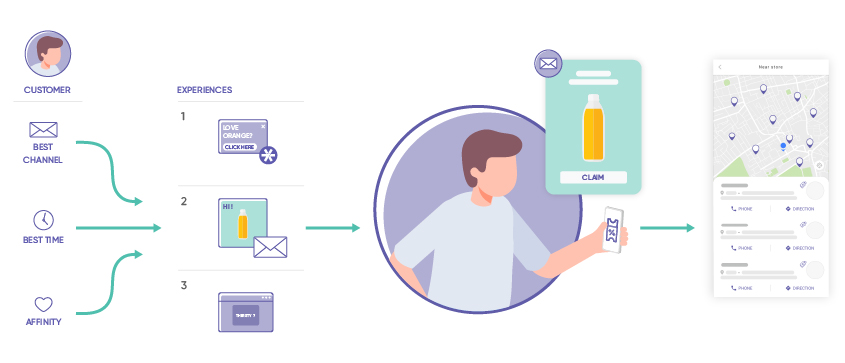First-party data is the future of addressable advertising. This can be well understood in the context of how the fast-growing digital ecosystem is having a compelling surrounding effect on the relationship between brands and consumers. With the current rapid changes- the new legal and technical requirements for digital advertising, the boom in eCommerce, and the shift in consumer behavior spurred by COVID-19 — first-party data is more important than ever.
As the cornerstone of digital advertising, it enables brands to offer consumers the greatest possible value in every digital interaction today and enhance their user experience with relevant, privacy-safe ads. Marketers should start actively collecting and activating their first-party data sooner rather than later to be able to adapt their strategies for sustainable advertising success in the long term and to stay ahead of the competition.
But before everything, we need to understand what could be the best approach for businesses to activate First-Party Data. And why is it essential for all market players to act now if they want to best prepare for the future and achieve optimal full-funnel impact and sales outcomes?
Data Exchange Platforms – The powerful partner with cutting-edge technology and skills
The most efficient and effective way to activate first-party data is to work with a dynamic data exchange platform (partner) that can connect the consumer’s surrounding data to their transaction events and thus offer an addressable behavioral audience to target and activate on an ongoing basis for business growth and marketing investment optimization.
Call of the hour: Activate Consumer first-party data
Marketers benefit immensely by activating their first-party data now, while third-party cookies are still available. Those who shall act today with first-party data strategy and activation will stay ahead of the changes and the competition with steady growth in new consumer acquisition.
The brands at this critical juncture have the unique opportunity to fundamentally change the way they reach and engage consumers. They should get quickly into a mode of test- learn- correct- implement to build long-term winning stories.
Prerequisites for First-Party Data Activation

Alignment
All the stakeholders of data within the enterprise must align on what data to collect and how to use them. Without this alignment, the first-party Data strategy and activation might go wrong and become counterproductive. Only this step can lead to an effective, personalized, relevant, and sustained consumer experience.
Standardization
After alignment, it is important to standardize the data formats and metrics across all the touchpoints from where it is collected. This establishes a source of truth that defines the collected data with a consistent naming convention and schema outlining the right context to interpret the data. Tools like a customer data platform can help implement these data governance rules to maintain data integrity.
Validation
Despite all the due diligence mentioned above, we can have data that does not match the specific need and may inevitably make its way to digital marketing and analytics platforms and tools. That’s why we need to have quality assurance (QA) checks in place to catch dirty data before it reaches the tools where we want to use it. To avoid the rigor, partner with the advanced data exchange platforms having automated data validation features that will automatically identify incorrect properties or data types.
Consistency
Last but not least is to confirm before acting on first-party data to ensure that it’s consistent across all of the tools where it will be used. When a data value changes in one place that should always reflect in other tools to prevent a disjointed consumer experience. For example, a user on a free plan upgrades to a pro plan, becoming a paid customer. The new event is to be consistent across any tool used to reach the customer so as to ensure the right profiling and categorization are reflected everywhere while driving the specific experience.
Tailor to customer objectives
Establish clear customer experience goals and align them to business objectives. These goals can then help to differentiate between critical vs nice to have data.
If we aim to drive loyalty and retain the most valuable customers, the next step would be to invest in the loyalty program as the primary source of first-party data. The program can be used to provide discounts, redeemable points, and personalized offers for loyal members to enhance engagement.
Offer value in exchange for data
People want more transparency to know their data is being used online and for digital advertising. Consent management and strong data governance are the key factors here. When brands demonstrate their responsibility with data and use it to deliver value through exclusive offers, customers are more willing to share their information.
Invest in tech and organizational enablers
The right technology, resources, and processes are also critical in the rightful and effective activation of first-party data. The usage acumen is related to the digital maturity of the organization.
A company can take a hybrid approach or can solely depend on the data Technology enablers (partners) depending on their grasp on the overall process. It is important to note that adding new technology is not sufficient in absence of the capability to connect to the existing technology and data platforms.
Strategic partnerships can also help you uncover the benefits of first-party data. Technology providers and platform partners bring external expertise and a deep understanding of data to better guide your strategy.
Test and learn to determine activation
A test-and-learn approach to assess the level of personalization needed for specific audience segments is an effective way to assess which activation type helps to achieve the marketing objectives. The idea is to prove value quickly with narrow use cases.
Refine and validate with measurement
The final key to a successful first-party data strategy is measurement. While measuring the effectiveness of the channel where one applies data can help with media optimization, measuring the effectiveness of the comprehensive data vision can help to optimize the overall marketing strategy.

At Grivy, we provide a holistic approach to activating first-party data on our data exchange platform between consumers and brands. We capture behavioral audiences at various stages on their path to purchase and activate them programmatically to drive transaction and insight. We drive scale and efficiency through our partnership with the largest retail chains, telcos, and top apps enabling data activation across the consumer purchase journey. The dynamic audience data that we make available to our clients in real-time helps them to create a custom audience and look-alike audience to maximize business growth with an optimized marketing investment improved from campaign to campaign.











